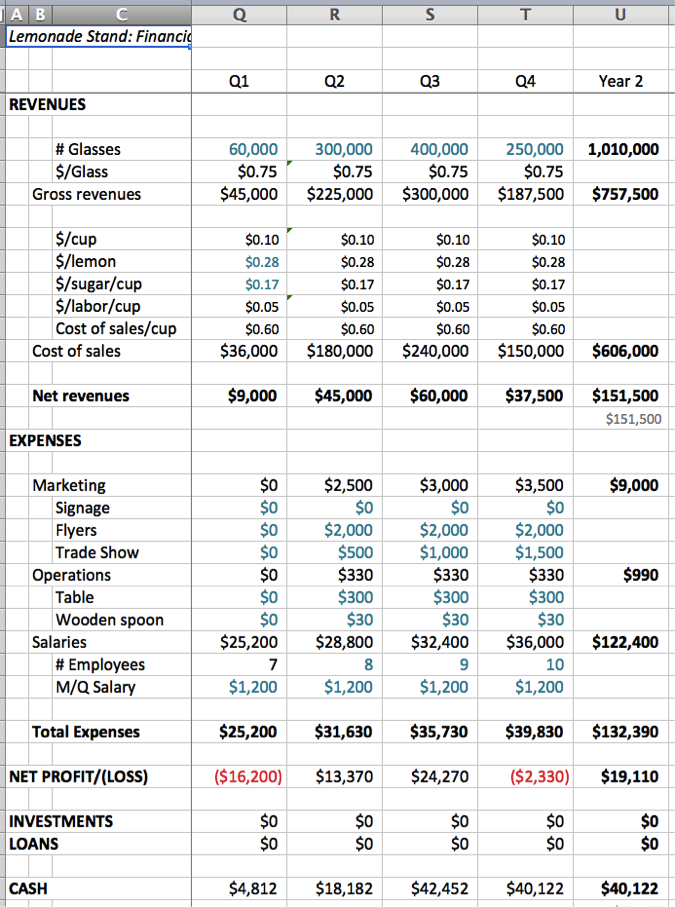Next, repeat your projections for Year 2. For most businesses, it is sufficient to use quarterly projections/estimates after Year 1, rather than stick with monthly.
Quarterly is usually sufficient for two reasons.
First, the uncertainty of your estimates increases the longer into the future you try to predict. Thus, whether an expense will be needed in February or March of next year is hard to predict with any accuracy. Knowing whether it will be in the first quarter or the third quarter is good enough.
Second, many businesses have seasonal changes, and quarterly values make those ups and downs more obvious. For example, if we assume this lemonade business is running in a temperate climate in the northern hemisphere, then it is likely that sales will be largest in the third quarter, during the summer, and lowest in the midst of winter, which is the first quarter.
This type of seasonality is demonstrated in Year 2 of the lemonade financial plan. Q1 drops total quarterly sales below that of Month 12 and, to match that drop in revenue, lowers all marketing and operational expenses to zero. Despite the lowered expenses, the quarter has a net loss.
Sales are then projected to grow in Q2 and Q3, returning the company to profitability, until Q4, when it once again loses money.
Looking at the annual summary, we see that the total sales are projected to rise to over 1,000,000 glasses of lemonade, just shy of triple the Year 1 results. Upon reflection, this seems unlikely without tripling the marketing budget or tripling the staff, but we will get back to that after we have three years of estimates entered into the plan.












